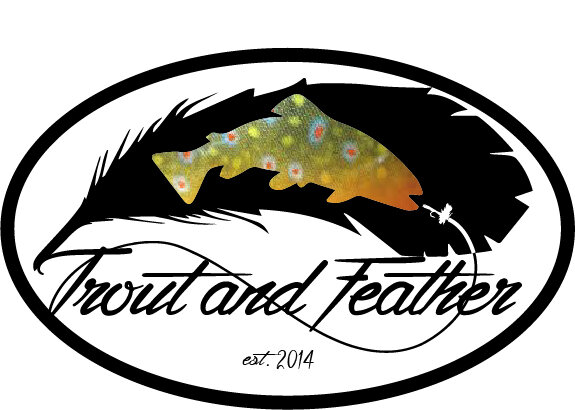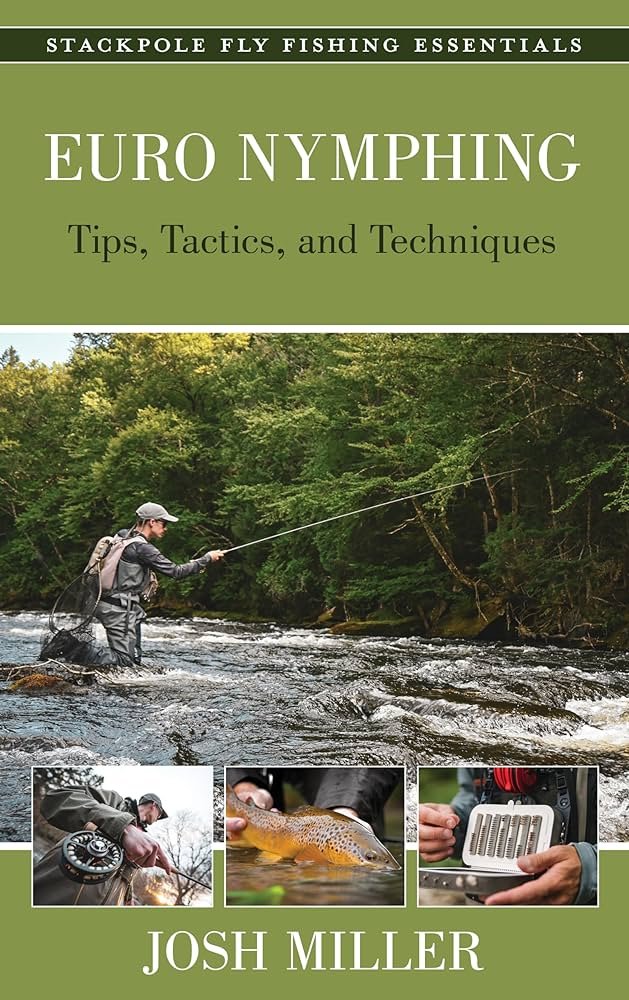What type of fly fisher are you? Maybe your motto is “Dry Fly or Die” and the Parachute Adams is a go-to during a hatch. Perhaps Kelly Galloup is your idol, and there’s always a streamer fly on the end of your line. Love fly fishing emergers? There’s no question it’s a favorite of mine, as it’s my most popular presentation for Trout Unlimited clubs and fishing groups. For those trout fly fishers that love to catch fish on a consistent basis, though, look no further than nymphing.
Pat’s Rubber Legs is an effective nymph that has caught fish for me around the world. However with its rubber legs slowing its descent, this isn’t a fly that is considered a Euro nymph.
Anglers agree that trout eat most of their diet subsurface, concentrating on nymphs, bait fish, and other food sources that get delivered to them by moving water. Successful fly fishers maximize their catch rate by focusing on these food sources, especially when there is no hatch present. Nymphs are especially important, as they form a significant portion of their diet. Fly fishers have been imitating them for decades with patterns like the Hare’s Ear and Pheasant Tail. So where do Euro nymphs fit in, what exactly are they, and why are they so darn effective?
For our purposes, we are going to define a Euro nymph as a slender-bodied fly that sinks quickly to the desired depth. We’re talking few appendages sticking out and slowing the descent, so that immediately eliminates effective flies like the Mop and Pat’s Rubber Legs. Do I fish those? Absolutely! But that’s another conversation. Euro nymphs tend to be tied on jig and down-eye hooks with slotted tungsten beads. When tied correctly, the fly rides hook point up, which means less snags if the fly gets close to the river bottom.
The Walt’s Worm is tied with Hare’s ear dubbing, giving it a buggy appearance. This one is the Blowtorch version, as the fly features a hot spot tail. Learn how to tie this pattern on YouTube: HERE
A perfect starting Euro nymph is a Perdigon; this small nymph is tied thin and coated with UV resin, which allows it to sink ultra-fast. In fact, the word “Perdigon” means “pellet” because it sinks like a rock! That doesn’t mean we want flies that are dredging the bottom; instead, we want our patterns to run close to the substrate so fish can intercept them during the drift. Euro nymphs get to that zone quickly, hence their effectiveness.
Fishing Euro Nymphs
What kind of techniques are best to fish with Euro nymphs? A productive style is known as Euro nymphing, or tight lining, which involves maintaining close contact with the nymphs as they drift downstream. Fly fishers can also use indicators with Euro nymphs, plus other styles like high sticking and jigging work, too. If you are already fishing nymphs, then try some Euro nymphs in place of your traditional nymphs with the methods you’re currently employing.
A popular fly rod for Euro nymphs is a 10’6” 3-weight; this sensitive rod helps detect strikes, yet is also long enough to hold line off of the water for a more drag-free presentation. Anglers routinely fly fish with rods up to a 6-weight when nymphing, though Euro nymphs are best fished with rods in the 9’ - 11’ range, with desirable rod weights including 2-, 3-, and 4-weight rods. The leader setup is important, as it impacts presentation, sensitivity, and effectiveness in detecting strikes. For my preferred Euro nymphing leaders, send me an email: HERE
Top Euro Nymphs
Speaking of Euro nymphs, which ones outperform others? This really depends on lots of factors, but let’s start with three effective flies that belong in every angler’s fly box. These patterns imitate an array of bugs that trout rely on, plus they are easy patterns to tie or find in fly shops.
Combine a Pheasant Tail Nymph with a hot spot thorax and you have the Frenchie! This version features a subtle thorax, imitative of emerging mayflies like the Light Cahill and PMD. Learn to tie the Cahill Frenchie on YouTube: HERE
Perdigon: This slender-bodied pattern sinks to the bottom in a hurry! The entire patterns consists of a Coq de Leon (CDL) tail and a UV resin covered body. Variations include a hot spot, either as a flashy body, fluorescent thread thorax, or hot spot bead. I prefer Perdigons with a thread body for a subtle and more natural look, though flashy versions are effective, too. Buy this fly online: Perdigon
Walt’s Worm: An easy-to-tie fly that imitates lots of insects, especially caddisflies and scuds. Hare’s ear dubbing is a favorite material used to tie this fly, in both light and dark colors. Hot spots on the fly, such as a hi-vis tail or thorax, grab fish’s attention to trigger an eat. Rib the Walt’s Worm with fluorocarbon tippet, a durable material that also helps to keep the fly slender. Not into tying? Buy this fly here: Walt’s Worm
Frenchie: No list is complete with a Pheasant Tail variation, the tiny PT barbules move in the water and drive fish crazy. Fly fishing competition angler Lance Egan is credited for introducing this version to many anglers, which features a fluorescent hot spot thorax. Favorite colors for the hot spot include orange and pink, fish this fly with confidence! Buy this Euro nymph here: Frenchie
These three patterns are found in Euro nymphing fly boxes around the world for one main reason: They catch lots of fish! Keep in mind, it’s not always about the fly. In a recent project where I interviewed some of today’s top competitive fly fishers, the consensus believe that technique outweighs fly. Put simply, select effective flies that are known to catch fish, then concentrate on improving your nymphing techniques with many instructional videos and books that are available today.
With so many Euro nymphs to choose from, it’s obvious we just grazed the surface with these three. Yet these provide a starting spot to build from, though I bet you already have some favorite Euro nymphs in your box. So now it’s your turn: Share in the comments section, what are some of your go-to Euro nymphs?
Learn more about Euro nymphing techniques from expert Josh Miller; his recently published book Euro Nymphing explains this fishing style in detail. Find the book on Amazon: HERE
BY TIM CAMMISA
I share my passion for fly fishing and fly tying through personal experiences and expert insights. As a seasoned fly fishing guide turned content creator, my YouTube channel boasts over 5 million views, offering viewers a wealth of knowledge and inspiration. While I cherish moments chasing trout in Pennsylvania with my family, I also lead fly fishing expeditions to the captivating landscapes of Iceland and Alaska. Additionally, I authored the acclaimed book Fly Tying for Everyone, aiming to empower fellow enthusiasts to tie superior flies, elevate their angling game, and savor unforgettable moments on the water.
If you click on links we provide, we may receive compensation.





